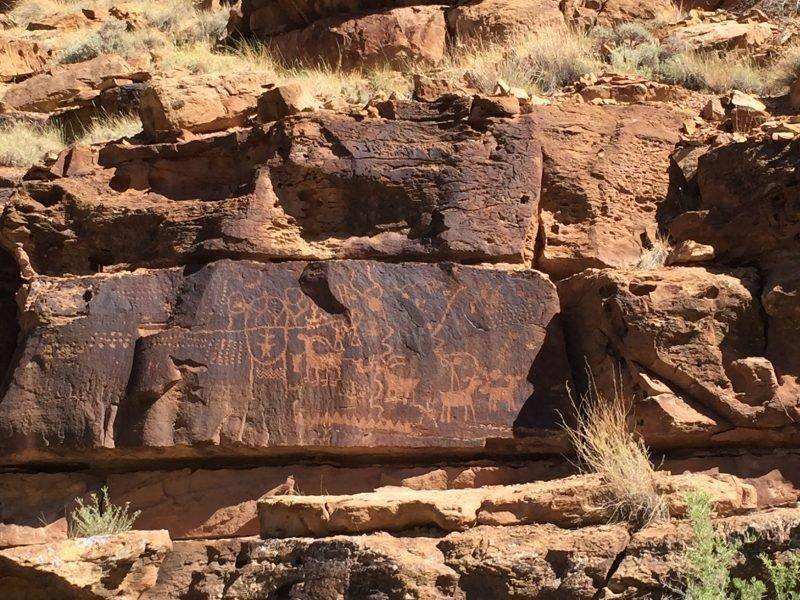By Simon Ambit
Winding up beyond the old mine and dropping down into Nine Mile Canyon is like stepping back in time. The cliffs and the sage create a tapestry border for the lifeline of the creek flowing like an artery through the heart of the canyon. Axle grease inked names on cliff faces give evidence of historic travelers, while dilapidated structures and fenced corrals show that more than just those passing through held an interest in Nine Mile.
We’ve all heard the phrase, “if these walls could talk.” As you journey deeper into the canyon and further back in time, that is exactly what happens; the walls of the canyon talk to you. They call out, speaking of generations of people whose pictographs and petroglyphs tell the stories of those who were here much earlier than the plows and the pioneers.
This past weekend as we camped in Nine Mile canyon, it was Stewardship Day. This meant that at many of the popular sites, there was an archeological student and/or an archeologist stationed for tours and info. Having been to the canyon many times, I was surprised at some of the artwork we were shown that I hadn’t known about previously.
As we went from site to site throughout the day, some of the guides would briefly speak on specifics, but all shared some commonality in that they would leave many things “open to interpretation” pertaining to what a drawing stood for or what a particular arrangement may have meant. Most of the guides said it was up to us to decide what it was about or what a peculiar looking drawing was representing.
At times when those present were polled as to what they thought a particular petroglyph was representing, we would get nearly as many variations of the answer as we had people present. Things I hadn’t previously considered were quickly made an optional reality, simply by listening to another person’s perspective and interpretation of things.
How is it that different people can look upon the same thing and see varying results? I think life is so very much about our perspective and interpretation. Our background and upbringing, our past successes and failures, our biases and preconceived notions, and our point of view all impact the results of the clarity and the outcome of what we see.
For example: you get pulled over for performing a traffic violation. You may frustratingly see an inconvenience of time or a non-compassionate officer. The officer, on the other hand, who regularly sees the stats for the amount of injury and death caused by the traffic violation you just performed, might see an opportunity to educate and make safe.
Life is as much about what we see as it what we look at. Enjoy the view.
I like a quote by Marcus Aurelis, “Everything we hear is an opinion, not a fact. Everything we see is perspective, not the truth.”

